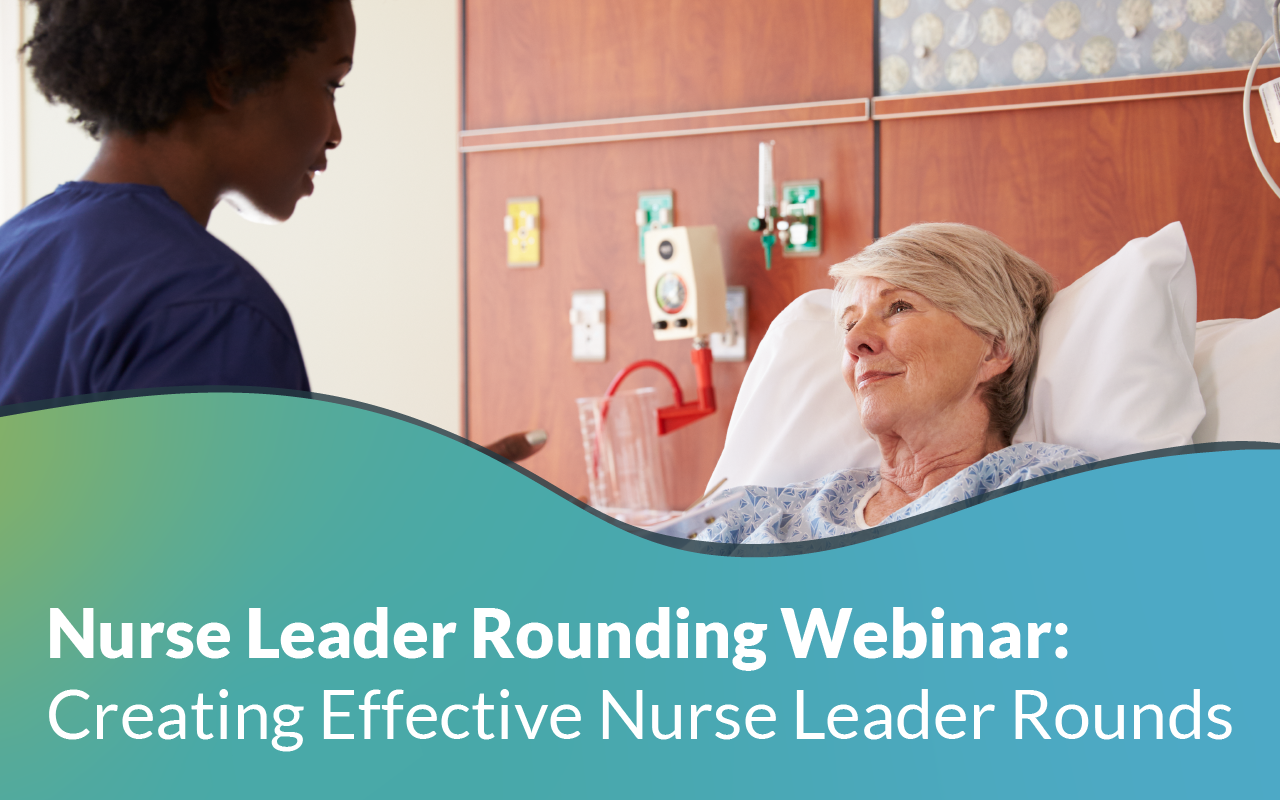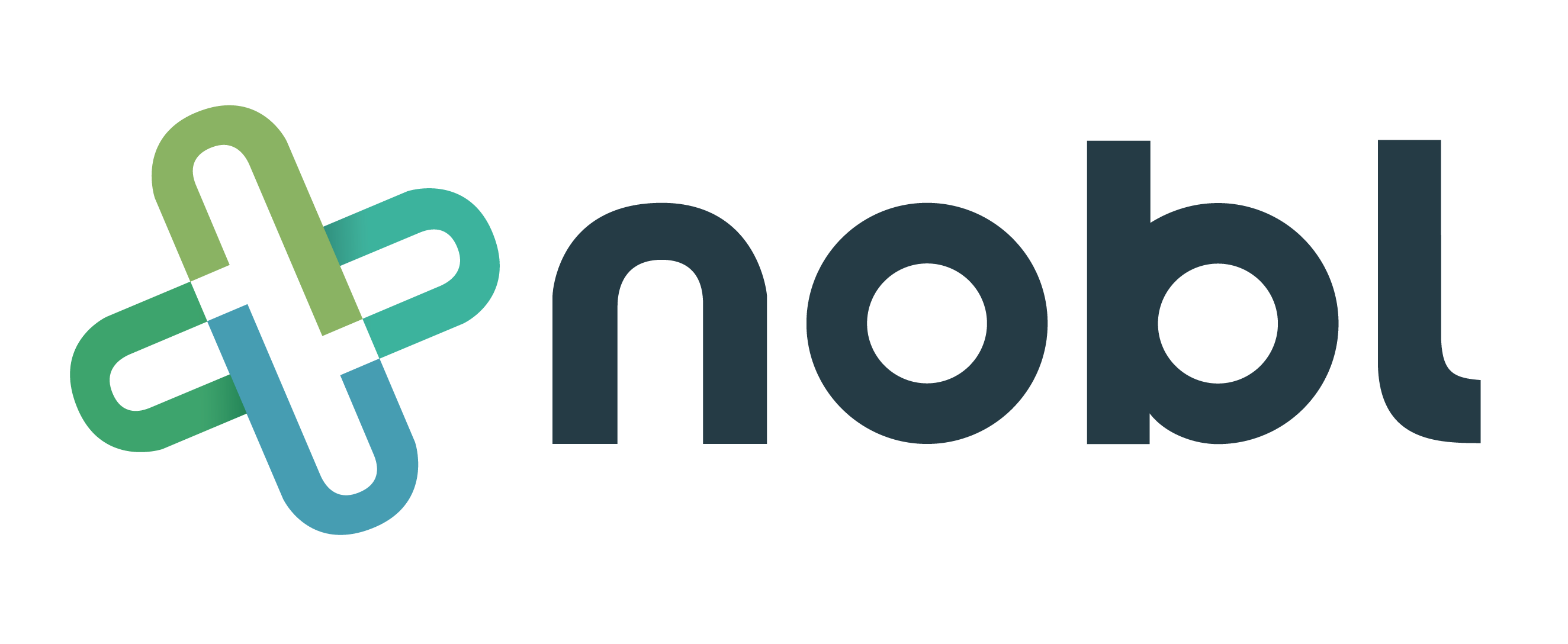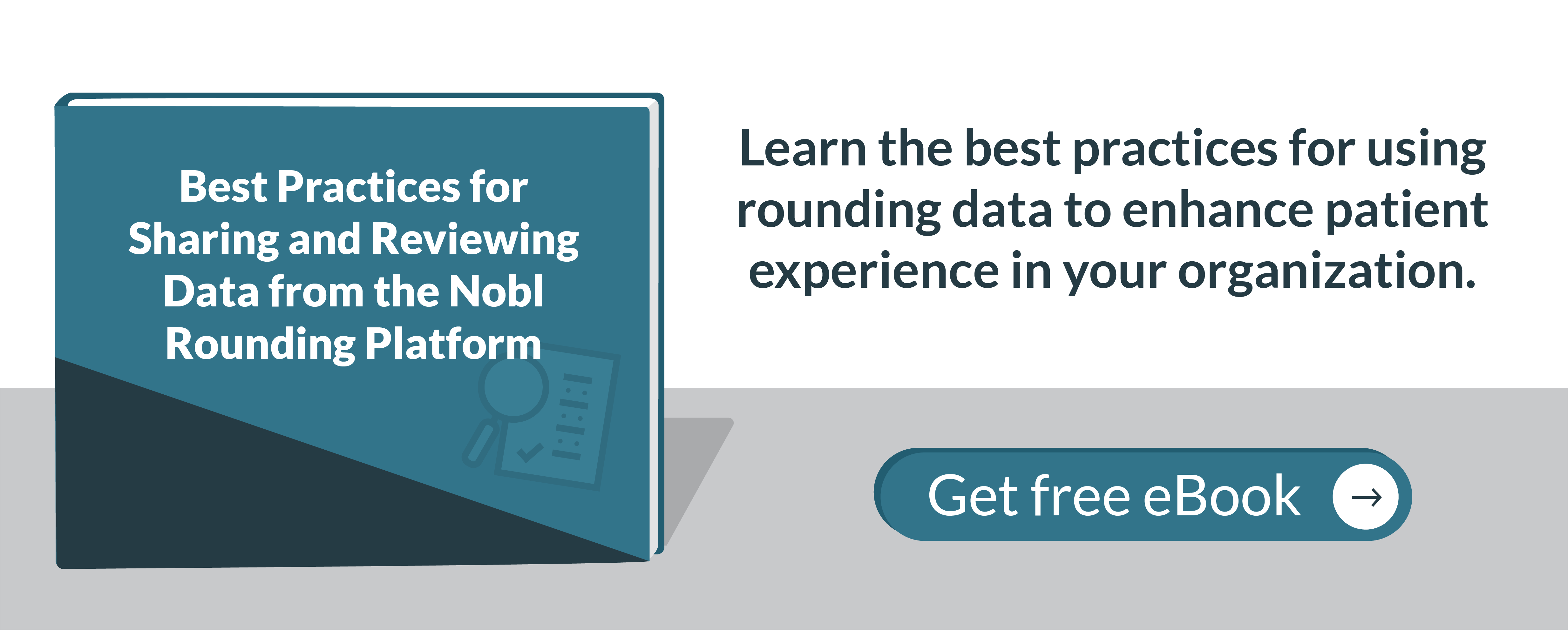
7 min read
Best Practices for Sharing and Reviewing Data from the Nobl Rounding Platform
Nobl Health Aug 27, 2021 7:35:00 AM
Data. It’s a word often used in healthcare to back-up our findings, justify our next steps, or in some cases lead us to a new conclusion. While we live in a world of big data, we may not intuitively know how to use this effectively to create change. In fact, only 15% of healthcare organizations in a recent Tableau IDC whitepaper are data leading. Data leading organizations are those with strong enterprise-wide data cultures. Yet 83% of CEO’s in the same survey want their organization to be more data driven. Data leading organizations not only have access to the powerful data; they build systems and processes that support the sharing, understanding and action taking that is necessary to make data-driven decisions.
The Nobl Rounding Platform is known in the industry for our robust reports, data analytics, and integrations of best practices into existing client processes. We introduce best practices to our clients during the gap analysis and implementation phases and then continue to share new innovations with clients during our ongoing data reviews. Besides best practices for rounding and audits, there are also best practices for reviewing and sharing data. Even the most robust reports aren’t helpful if they are not disseminated and utilized to their full extent.
In this article, we will explore best practices and take-home tactics that healthcare organizations can use to understand and act upon data derived from rounding on patients, employees and environments of care.
The Importance of Sharing Rounding Data
- Data trends are the best way to identify root causes and significant process improvement needs. Proactive actions taken to address validated concerns are better than reacting to occurrences that might be outliers. Healthcare is ripe with processes that were implemented after a single adverse event, rather than thoughtful analysis of the probability of the event happening again.
- Even with rationale for new processes, changing long embedded practices can be stressful and staff might still resist. Sharing correlations between daily, monthly, or quarterly compliance rates and outcome metrics like falls or patients’ perceptions of responsiveness, can prove that compliance does make a difference and help staff to fully engage around initiatives.
- No one knows the work better than those who actually perform that work every day. Leaders get this data by “going to the Gemba” or the place where the value is created for customers. Who better to ask then those performing the work. Employee rounding data informs more than just engagement or likelihood to remain with an organization. Employee feedback and suggestions are often the most effective measures to impact safety and patient experience. Sharing staff comments with peers and other departments sparks new ideas and disseminates best practices.
- It is a missed opportunity if reports do not get to direct care providers in a timely manner. Real improvement comes from compliance with standardized processes. Compliance comes from understanding the rationale for actions and a work environment that supports staff to have the time and resources to complete tasks correctly and thoroughly.
Who Should Receive Rounding Data
- Hourly rounding data really belongs to the direct care nurses and should be shared soon and often. Improving compliance with processes increases when the team starts to see that their combined efforts are making a measurable difference. Using peer support and team coaching is always better than a punitive approach for those not fully implementing desired actions.
- Data gathered by nursing leaders rounding on patients is a great opportunity for leadership to identify barriers to a patient-centered experience. But that data really belongs to the whole unit and should be made routinely available to the team. Praises, concern trends and verbatim comments from patients help the staff to learn from each other and to become more aware of how the unit culture appears to patients. Facilities with Patient and Family Advisory Councils (PFACs) should always share patient feedback with the members of this group. These customers can offer further insight to the comments or concerns received and are a great resource when facilities explore process changes.
- Ownership of executive leader data also extends beyond their level. While trends and comments made to executive leaders often inform the overall strategies of the organization, they also connect the boardroom to the bedside. By using the same tools and processes that are expected of front-line leaders, the chiefs can find out firsthand the factors that lead to success, or lack of success, with rounding or other initiatives. This helps executives to look beyond the budget numbers to the realities of the beside situation.
- Beyond ideas and suggestions, employees deserve to see the overall results of employee rounds too. Self-reflective leaders acknowledge that unit and facility cultures are often determined by the perceptions of leadership support and teamwork. Employee rounds that involve true listening and value for employees lead to highly engaged team members and improved retention. Leaders perceived as insincere or too busy to care during a round, contribute to active disengagement. Teams that share data openly and honestly, and plan changes together, are more successful.
What reports are available from Nobl?
A variety of reports are automatically populated within the Nobl platforms – Hourly, Leader, Employee – and Service Recovery module. In addition to the reports provided, the dynamic search and filtering options give users the ability to customize data sets and find individual results quickly and easily. Raw data in CVS or excel formats is available within each report set to make it easy to download for other uses. Reports are also available in a variety of forms such as PDF which are convenient to upload into presentations or for posting.
How can you integrate data and drive data-driven decisions in the stakeholder’s workflow?
Daily data-driven decisions
Integrating daily data into huddles and end-of-shift debriefs is an excellent way to energize the team and provide recognition or support as needed. Sharing a high level of hourly rounding compliance, or a successful shift without a fall or other safety event connects the work to the outcomes and recognizes staff right when they need it after a challenging shift. Alternatively, if compliance was not at the desired level, the team can communicate the barriers or issues right away so that changes can be made to improve the next shift. Things like using the rounding maps to make the rounding a ‘team sport’ or reminding staff how patient usage of the Friends & Family Portal provides updates to family and reduces phone call interruptions come out of these debriefs.
Monthly data-driven decisions
Rounding and audit data can and should be integrated into all facility or unit councils, teams, or task forces, not just reserved for the Patient Experience (PX) Committee or staff. Every aspect of daily work in hospitals aligns with the potential experiences of patients and families. For example, the Falls Committee should evaluate compliance with hourly rounding goals, observations of environmental safety checks, and patient comments about their feelings of safety. Making changes to standardized processes before they have been fully implemented may be a missed opportunity for enculturation of the right practice. Only when an intervention has been fully implemented by all staff can the efficacy of that intervention be fully evaluated. Jumping to new ideas might just create frustration and lack of buy-in from staff who already have a high level of responsibility without adding the ‘flavor of the month’ and something new to learn.
Quarterly data-driven decisions
Conversely, the PFAC and staff Patient Experience (PX) Committees should see all aspects of data collected in rounds, audits, observations, and checklists. Their primary role is to understand and improve the overall patient experience and that is only possible when they review data beyond HCAHPS surveys or targeted patient satisfaction questions. While the Falls Committee is evaluating the data for safety and fall prevention success, the PX groups can be evaluating the impact of interventions like bed and chair alarms on the perceived patient experience. If the alarms improve safety but terrify cognitively impaired patients in the middle of the night, another option might be needed for specific populations.
These ideas stimulate teams to think of similar PX and safety crosswalks or methods to address the overall and day-to-day safety and experiences of customers in all areas of care.
What are the tactics Nobl partners use to make data-driven decisions?
Voice of the Customer Reports and Huddles
The voice of the customer (VOC) is a patient experience movement that is gaining momentum as organizations strive to consider patient service needs on a deeper level. One organization requested a customized VOC report that was disseminated via email to key accountable leaders just prior to the daily VOC huddle. Prior to Nobl, nursing leaders were spending time manually creating a recognition and concern comments report resulting from their rounds for review by the interprofessional team at the huddle. The automated report saved the leaders a tremendous amount of time, but also provided data for evaluation beyond the daily experience. Using this data, the organization was able to identify trends and provide real-time service recovery and proactive service which significantly impact their patient satisfaction scores. Unit leaders are now able to problem solve and address concerns, so that the huddles are now focused on bigger wins and sharing specific verbatim comments.
Lean Management Boards
With the multiple levels of real-time data available in the Nobl Rounding Platform, leaders can now update visual management tools at the unit level with PX information, not just safety and PI data. Adding PX into the ongoing reporting of occurrences and improvements brings the PX to the same level of importance and focus that are often reserved for quality and safety data. These leading metrics, make it easier to predict ratings from patients on surveys after discharge. Adding a net promoter score predictor question to leader rounding identifies those leaders who are skilled at reading patient non-verbal cues along with verbal responses. This enables peer-to-peer coaching to improve skill for other leaders and to proactively reduce the escalation of concerns to complaints or grievances.
Linking Praises to Formal Recognition Programs
By using Nobl to easily record praises of staff from patients or peers, individual praises and specific comments can be linked to formal recognitions such as Daisy Awards, STAR Awards, or tokens/points to redeem on campus for treats or gifts. Accessing individual user rounding data and/or praises during annual performance appraisal completion provides an opportunity to recall or trend performance over the entire evaluation period, rather than memory of recent or only significant positive or negative events. Solid performers who are not low or high performers can get the recognition or coaching they need to grow and advance their skills.
Integration with HCAHPS and Predicting Patient Experience
To help create an effective leading measure for patient likelihood to recommend, a prediction question similar to a Net Promoter Score can be added at the end of the nurse leader rounding form. This question asks each rounder to subjectively predict the level of engagement of the patient based on their interaction during the round. Predictions of 9-10 align with an engaged patient, 7-8 reflect satisfaction and 0-6 represent dissatisfaction. As HCAHPS or other patient experience survey scores came in after discharge, Nobl would automatically create reports that showed the accuracy of predictions. Coaching on countermeasures and service recovery were provided to leaders. Friendly competition and transparent data helped to elevate rounding skill, confidence, compliance, and effectiveness.
Raising the White Flag
Another tactic that can be deployed based on voice of the customer data is to ‘raise the white flag’ on the outside of a patient’s door. Adding a visual white flag outside of the patient’s room, shares the awareness to all team members that this patient is at risk of disengagement. Team members trigger an “at risk” patient in various ways including:
• Previous low HCHAPS survey score that was shown in Nobl during the nurse leader rounding
• Complaint expressed during a round or patient interaction
• Team member intuition recorded by the NPS prediction score during rounds.
This tactic in used in a similar spirit that nursing teams use to flag fall risk patients and those on precautions.
Senior leader Rounding Scouting Report
Senior leaders who round on departments find having a pre-populated report from the department manager ahead of time can prevent them from getting blindsided by upset employees or unexpected situations.
Before a senior leader’ rounds on a department, a department manager completes a scouting report in Nobl with topics that range from department accomplishment’s, recognition, engagement, to issues/ concerns. When the senior leader goes to the round on the department, they can simply pull up the department rounding form and the prefilled out scouting report data is compiled at the top of the page. This helps them know in advance what issues need discussing, which staff members need recognizing, and key topics to cover.
Written by Teresa L Anderson, EdD, MSN, NE-BC, Nobl Chief Nursing Officer
New Free eBook
Best Practices for Sharing and Reviewing Data from the Nobl Rounding Platform
Beryl Institute Case study
Improved First Impressions at Your Front Door - Patient Ambassador Rounders Enhance the Patient Experience of a Busy Emergency Department
Recent Posts

Five Key Factors to Consider in Pediatric Leadership Rounding



